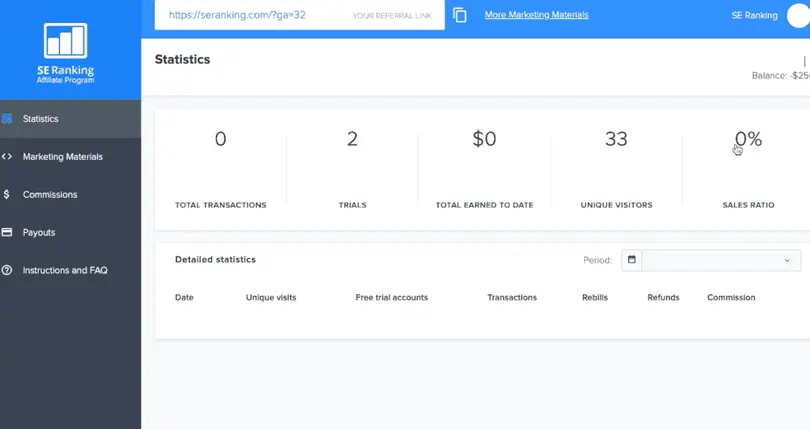It may surprise you to know that the first American eCommerce company, CompuServe, was founded as far back as 1969, long before most people had access to computers. It was a decade later, however, before English Inventor and entrepreneur, Michael Aldrich, is credited with inventing electronic shopping. In 1979, he created online shopping to enable online transaction processing between consumers and businesses. He did this by connecting a modified domestic TV to a real-time transaction processing computer via a domestic telephone line. This was undoubtedly the forerunner of what we consider eCommerce today.
An Introductory Guide to eCommerce:
What is eCommerce?
eCommerce is a shortening of the phrase electronic commerce. It effectively covers everything related to buying and selling goods and services online.
Confusingly, it is a term without a standard spelling. People have written entire blog posts on the various spellings of the word. You will find all the following combinations on Google’s home page: Ecommerce, eCommerce, E Commerce, E-Commerce, e-commerce, E-commerce, and e-Commerce.
eCommerce (as we will spell it here) encompasses all online selling, covering a wide range of sales models. We will look at some of the most common in this introductory guide to eCommerce.
Starting an eCommerce Business
One of the significant advantages of starting an eCommerce business, compared to a traditional bricks-and-mortar business, is that it can be considerably more straightforward for the average person to start a business online. Anybody can build an eCommerce business in a relatively short period, for a comparatively minor financial outlay.
Obviously, a beginner isn’t going to create an Amazon-killer overnight, however. Costs will vary depending on your scope, the types of products you intend to sell, your source for your products, and the level of marketing you will undertake. But you can always start small, expanding as your funds and knowledge increases.
Mark Joyner of Simpleology knows much about running an eCommerce business. He is the Founder of 30+ startups. He started the first eBook publishing company, the first online ad tracking company, the second PPC search engine, and invented the tracking pixel. He teaches that making money is a system where you take inputs of time, energy, and money, and through your efforts, you come out with more money. Making money online is an example of what Joyner calls an Entrepreneurial Subsystem. Run properly, Entrepreneurial Subsystems can multiply your input to increase your output. One of the great advantages of an eCommerce business is that you need comparatively less money as an input than other Entrepreneurial Systems, to give you an acceptable output. And you can then leverage this to grow, helped by gradually increasing word-of-mouth advertising.
The other main advantage of an eCommerce business is that you have the potential of a much larger audience than you would if you just focused on selling to your immediate neighborhood. We recently looked at the creator economy. At one time, the idea of people making money from their passion would have been unimaginable for most – there would have been too few potential customers in their near vicinity. But the world has opened up, and we now have many vertical-specific work platforms, focusing on very narrow niches. The same philosophy applies to eCommerce businesses. You can literally sell to the world, particularly if you sell a digital product.
Critical Decisions to Make About Your eCommerce Business
1. What Types of Products do You Intend to Sell?
The first thing you will want to consider when setting up an eCommerce business is the top of products you intend to sell. You can select from four types of products:
-
- Physical goods – actual products that you will ship to your customers
- Digital products – products that your customers will download over the internet
- Services –where you sell something that you will do for the customer
- Affiliates –you can earn commissions by using affiliate links to other people’s physical goods, digital products, or (less commonly) services. We have written in more detail about this in What is Affiliate Marketing?
Of course, you might sell a mix of these in your eCommerce store. However, most people and businesses begin with one type of product before expanding into other niches.
2. How Will You Source Product?
Once you have decided upon the types of products you should sell, you will have to consider how you intend to source and then deliver them. Obviously, if you have opted for affiliate marketing, you will need to search affiliate sites for the types of products you are happy to market. In that case, they will have established procedures for delivering products (and storage in the case of physical products).
If you have opted for physical or digital products, you will need to consider:
-
- Will you make your products in-house? In this case, you will need to source all the raw materials you’ll need. Obviously, you will need space to store these materials, make the products, and then store a stock of completed products. Of course, if you are looking at digital products, this is less of an issue, but you will still need to factor in the time it takes to make a digital product and whether you have the skill or need to pay someone else
- Will you outsource the manufacture of your products? You will need to investigate the feasibility and cost of this. You will probably have to meet minimum order quantities and have somewhere to store these
- Will you buy products from wholesalers and resell them? This is the model that most closely resembles the pattern for a traditional retailer. Again, you will typically have to consider storage
- Should you dropship products? This is an option particularly suited to those with limited upfront capital and storage space. With dropshipping, you don’t have to carry stocks of goods, nor will you have to worry about shipping. You simply source products from specialist dropshipping companies, and they will deliver the goods when you make sales. Of course, you will lose a portion of your profit on each sale as you have to pay the dropshipping company for their service.
3. To Whom Do You Intend to Sell?
You might think you are happy to sell your goods or services to anybody willing to pay you. In reality, however, you are far more likely to focus on a particular type of customer, and the marketing you use will definitely reflect this. While you can segment your customers granularly, particularly when you use something like Facebook Marketing, there are three general groups of customers:
-
- B2C (Business to Consumer) – this is probably the most common type of sales and marketing process. If you predominantly target consumers with your marketing and sell to people, rather than organizations, then you can consider yourself a B2C business
- B2B (Business to Business) - these are businesses whose customers are predominantly other businesses. You might be a manufacturer selling to a wholesaler, a wholesaler selling to retailers, or a support firm (like a stationery company or a tax agency) selling to other businesses.
- B2G (Business to Government_ these businesses have government departments (or other levels of local, state, or federal government) as their primary customers.
Of course, you might sell to more than one of these general categories. You might, for instance, sell stationery to companies, but also have contracts with government departments to supply their stationery needs. If you create websites, for example, you might promote yourself to both small businesses and individuals wanting to set up a personal site.
4. How Do You Plan to Sell Your Goods?
There are now quite a few ways that you can set up your eCommerce store. You may even choose to operate in multiple ways to ensure that you reach a wider group of potential customers. Some of the most common ways eCommerce stores can function online include:
-
- Create a Branded eCommerce Store – this is probably the most clear-cut way to build an eCommerce store. You set up an online store, and sell your products from that website, usually using an eCommerce platform such as Shopify to help you.
- Sell on an existing eCommerce marketplace – if you don’t want to build your own site, you can sell in a specialist marketplace, such as Amazon, Etsy, or eBay.
- Carry out conversational commerce – this is a flash name for selling your products on social media. Most of the leading social sites have marketplaces or groups where you can sell your products. Using Mark Joyner’s philosophy, you are likely to use more time or energy and less money when engaging in conversational commerce than creating a branded eCommerce store.
5. How Will You Build Your eCommerce Store or Other Sales Method?

Source: freepik.com
This obviously depends on how you have chosen to sell your products online. If you are happy to rely simply on conversational commerce, you need to decide which social networks are worth your time and energy. You will need to set up accounts on these sites, creating a suitable profile, page, or channel. You will then need to build your credibility on the site, usually by posting regularly and providing content of value to your potential audience. You will probably also look at advertising on your preferred network, particularly once you start to upload products for people to buy.
If you choose to operate more formally through a specialist eCommerce marketplace, you will need to set up your section of their site and begin to upload listings for the items you want to sell.
Of course, setting up a full branded eCommerce store will be considerably more work up-front, but this also gives you the most potential. You can’t easily control what happens on your social sites or marketplaces. They are like being in a mall – you have to abide by rules and regulations, and the social network can remove you if you don’t do things its way. An eCommerce store is yours, however, and you can set it up and operate it however you want.
There are two main methods you could use to build an eCommerce store. You could pay developers to create a bespoke custom website that includes all the necessary features of an online sales store. Alternatively, you could build a site using one of the specialist eCommerce platforms, such as Shopify or BigCommerce.
Some businesses use a mixture of these methods to sell their goods. They build a formal online store and use social media as a tool in their marketing, selling some of their products from the social channel. They may also operate on Amazon or one of the other marketplaces too. Instagram has helped this process with its shoppable Instagram posts. These allow you to synchronize the product catalog you have in your eCommerce store with your Facebook and Instagram accounts automatically. When you tag products in your photos with shoppable pricing tags, Instagram users can view your featured products and decide and order directly from their Instagram accounts.
6. How Much Money Will You Need Up-Front?
The amount of money you need upfront will depend very much on the decisions you have made above. Each eCommerce business is different. In some ways, you should perhaps start with your budget, because it places limitations on what you can do.
If you are limited in funds, then your best bet may be to start a dropshipping business or create a digital product you can sell. You could even begin by marketing on social channels or an established marketplace before building a real eCommerce shop for yourself.
The Importance of Planning Your eCommerce Business
Once you have a general product idea, you will need to plan your eCommerce business. The old maxim, “failing to plan is planning to fail” is just as relevant for an eCommerce business as for any other type of enterprise.
If you have been through the previous steps, then you will have already decided on most of the essential steps of your business plan.





